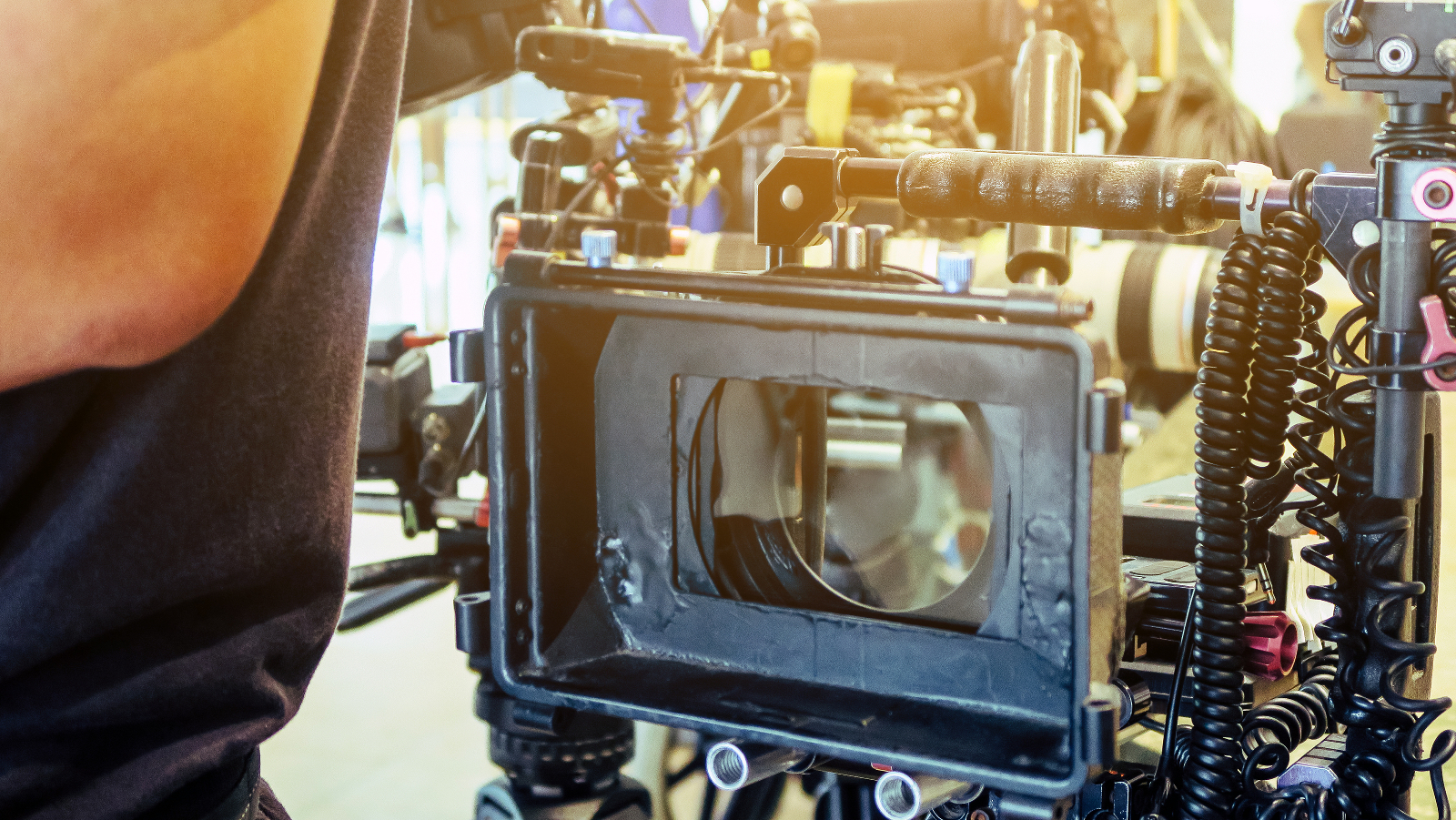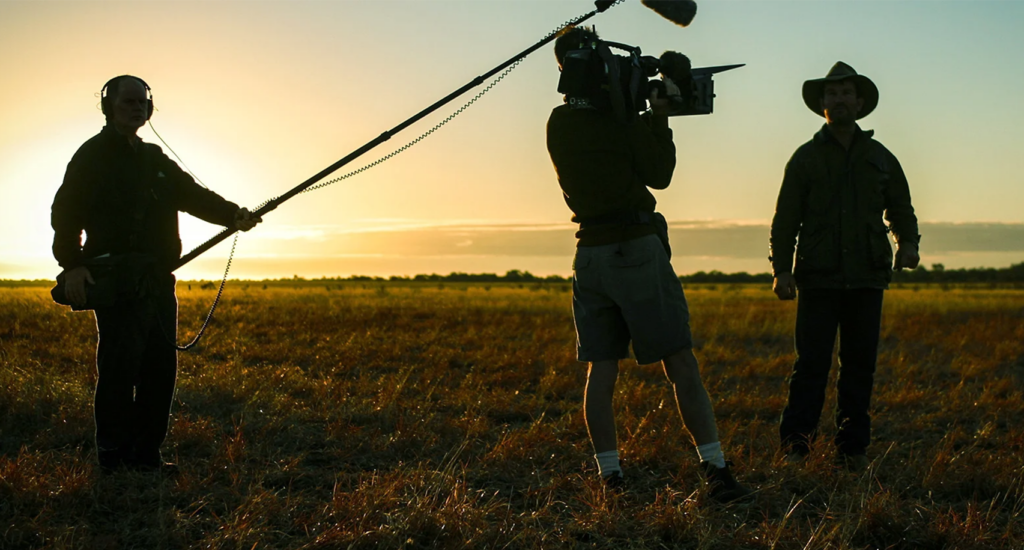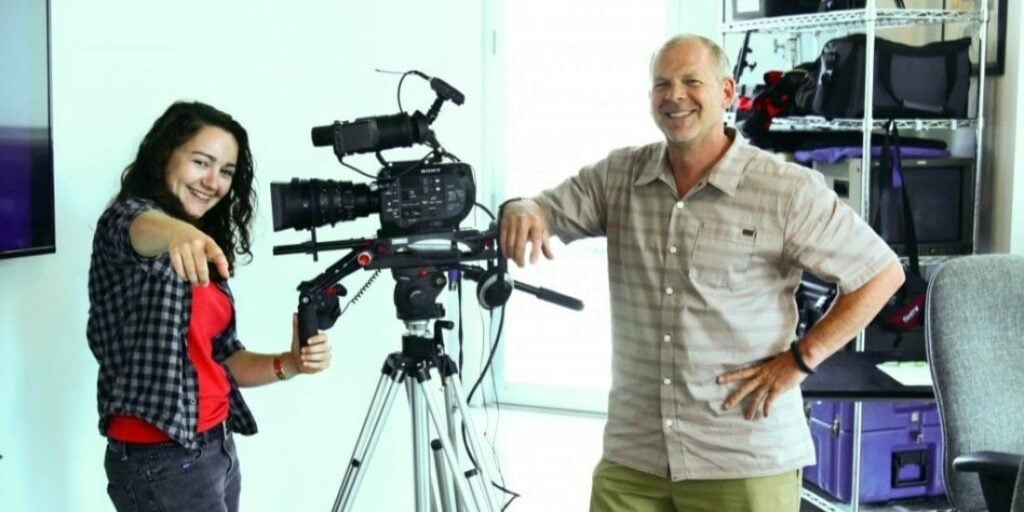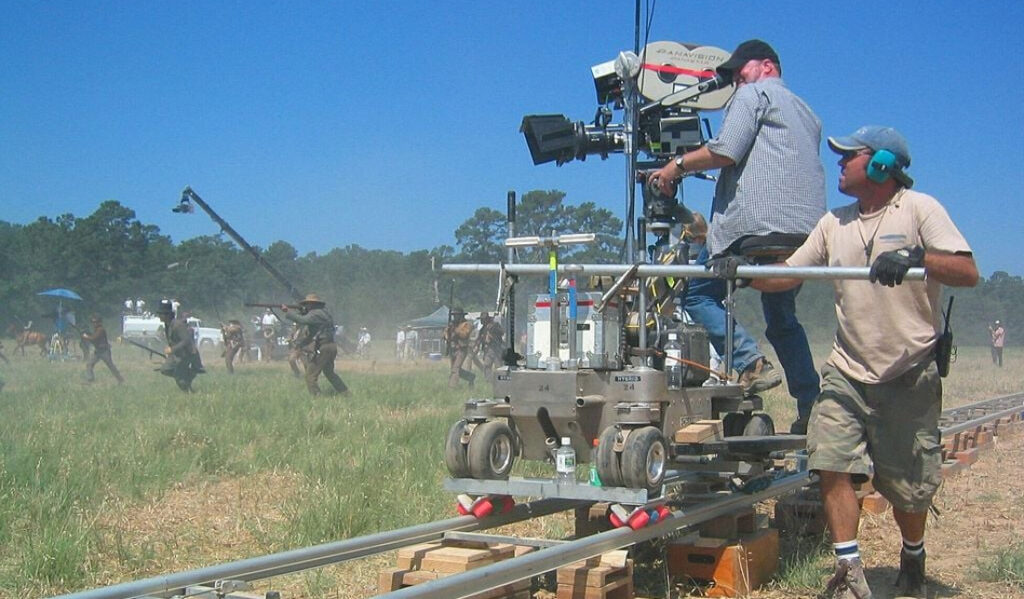In the world of filmmaking, the terms ‘Cinematographer’ and ‘Director of Photography’ (DP) are often used interchangeably. In many cases, Cinematographers and DPs are indeed the same person, especially on smaller productions. But are there any differences between a cinematographer vs director of photography?
Although they share many of the same skills depending on the size of the production, the cinematographer might be more involved in the planning stages, creative control, choosing the aesthetic, studying the script, and planning the camera work ahead of time, while the DOP handles the execution of these plans on set.
Many in the film industry believe they denote the same role, and in many cases, they are the same person. If you drill down, however, there are indeed subtle differences. Depending on the scope of a project, having both a cinematographer and a director of photography can streamline the filmmaking process immensely.
Cinematographer vs Director of Photography
While the roles are closely related, the distinction lies primarily in the stages of production they are mainly involved in and the extent of their involvement in the technical vs. the aesthetic aspects of the film. You’ll see there’s a lot of overlap between the two roles, but each also has its own specific tasks.
Cinematographer
A Cinematographer is a person who studies and applies all the aspects of filmmaking related to camera work and lighting. They visualize the script, create an aesthetic that serves the story, and use lighting and camera angles to enhance the mood and narrative. Cinematographers need to be technically adept and artistically inclined, understanding the best ways to capture the visual elements of a scene.
Visual Storytelling
Through their expertise in lighting, camera angles, composition, and movement, they work to create captivating visual images that not only enhance the emotional impact of scenes but also tie together the narrative as a whole. The role of a cinematographer is nuanced and requires a deep understanding of both the artistic and technical sides of filmmaking.
Aesthetic Vision
A film’s visual identity is a crucial element in how it is received by audiences. Working with the director, the cinematographer creates a cohesive style that conveys the mood and tone of the story. The cinematographer injects a unique artistic eye into the process, allowing them to create stunning visuals.
Technical Expertise
Cinematographers have a deep understanding of cameras, lenses, lighting equipment, and all the necessary filming techniques to capture the perfect image. Their technical skills ensure the visuals are captured just as the director envisions – with the right exposure, focus, and desired visual quality.
Lighting and Mood
Lighting is a crucial element in cinematography, and the cinematographer is responsible for designing the lighting setups that complement the story and characters. The use of light and shadow helps create different moods, emphasize important elements, and set the overall tone of the film.
Visual Consistency
It’s crucial for filmmakers to ensure visual consistency throughout a film. This involves close collaboration among the director, cinematographer, production designer, and costume department. Maintaining this consistency not only creates a seamless viewing experience for the audience but also helps immerse them in the movie’s world.
Problem Solving
On a film set, unexpected challenges can arise, such as difficult shooting conditions or creative changes. The cinematographer needs to be adaptable and find solutions to maintain the film’s visual integrity.
Cinematography is an art form, and the cinematographer’s skills and creativity contribute significantly to the film’s overall artistic expression. Their expertise and creative contributions are essential for the success of a film and its ability to engage and captivate audiences.
Director of Photography
The Director of Photography, on the other hand, is a role specific to a film set. They are in charge of the camera and light crews and make decisions on the lighting and framing of scenes in conjunction with the film’s director. The DP executes the vision of the director by selecting the camera, lens, filters, and other technical aspects. In essence, they are hands-on, bringing the director’s vision to life on screen.
Collaborating with the Director
The DP works closely with the film’s director to understand their artistic vision and interpret it visually. They discuss the tone, mood, and style of the film and collaborate on shot composition and camera movements that align with the director’s vision.
Camera and Equipment Selection
They are responsible for choosing the appropriate cameras, lenses, and other camera equipment required to reach their visual aesthetic. They consider factors like the film’s format, aspect ratio, and technical requirements.
Lighting Design
The DP takes on the responsibility of determining the placement of lights, their intensity, and color temperature for every shot. They do this so that they can craft the desired atmosphere and mood for the audience to experience. Working alongside the gaffer and lighting crew, the DP ensures that the lighting setup enhances the overall visual narrative without distracting from the story.
Camera Operation
While they may not physically operate the camera, they play a vital role in framing and capturing each shot for the audience to see. Collaborating with camera operators, the DP ensures that every shot is composed perfectly and that the camera movements contribute to the storytelling. The DP also decides when and how the camera should move, using techniques like tracking shots, crane shots, and handheld camera work to add emotion and dynamism to each scene.
Shot Composition and Framing
The DP is responsible for the visual composition of each shot, considering elements like framing, perspective, and visual balance to draw the audience’s attention to key elements on the screen.
Continuity
Maintaining visual continuity is crucial in filmmaking, and the DP ensures that shots match each other in terms of lighting, framing, and visual style throughout the film. The DP may be involved in post-production processes, such as color grading, to maintain the intended visual look of the finished product.
Problem Solving
The DP must be resourceful and adaptable, as unexpected challenges may arise during production. They find solutions to achieve the desired visual results, even under challenging circumstances.
Overall, the Director of Photography is responsible for the film’s visual language and plays a central role in bringing the director’s artistic vision to life on the screen. Their expertise in cinematography and lighting is essential in creating visually captivating and emotionally engaging films or television.
Cinematography vs Director of Photography: Learn Both at Film Connection
Film Connection takes you out of the classroom and puts you in the middle of a film production work environment. Your mentor is an industry insider with years of experience and you’ll be helping on the set or on location. You’ll get your hands dirty working with the equipment that makes films, television, videos, and more in today’s world.
Why spend four years (and take on massive student loan debt) at university when you can get foundational skills and practical experience in a matter of months? You’ll work with others in the industry, making connections and relationships that can only help you along your career path.
If you put in the time, effort, blood, sweat, and tears that is. Film Connection programs aren’t for weekend warriors: we want students that are driven to reach their goals and are serious about making a career in cinematography, directing, editing, screenwriting, and other film industry jobs. If that sounds like you, get started today.







